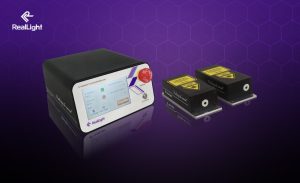Pulsed laser photoacoustic imaging
Pulsed Laser Photoacoustic Imaging (PL-PAI) is a new biomedical imaging method. As a non-invasive and non-ionizing imaging method, it combines the high selection properties of pure optical tissue imaging with the deep penetration properties of pure ultrasonic tissue imaging. This method avoids the influence of light scattering in principle, and can obtain high-resolution and high-contrast tissue images, so it is gradually paid attention to and applied by experts in the biomedical field.
Novel imaging technology:
Pulsed laser photoacoustic imaging has been applied in two major fields: clinical medicine and biological detection. Its unique technical advantages make it stand out from traditional imaging methods such as B-ultrasound and CT. Based on the narrow pulse width of the pulsed laser, the imaging resolution can reach the micron level. Due to the difference in wavelength absorption of substances in the tissue cells, the imaging images have ultra-high contrast maps. When irradiated with a specific wavelength laser, such as the 532nm laser, photons can penetrate even several centimeters deep into the tissue to achieve deep tissue imaging. Since no exogenous contrast agent is required, the safety of the operator and the sample is protected, and there is no need to worry about radiation effects. Finally, this imaging method can also provide functional information such as tissue oxygen saturation and hemodynamics.
Principle:
The principle of photoacoustic imaging can be divided into five steps from the process. In the first step, the narrow pulse width laser illuminates the biological tissue, and the laser energy is absorbed by the tissue. In the second step, the tissue that absorbs a lot of energy cannot release energy in a short time, the temperature rises, causing thermoelastic expansion, and the periodic heat flow causes the surrounding medium to expand and shrink to stimulate ultrasonic waves. In the third step, the ultrasonic transducer receives the ultrasonic signal generated by the tissue. In the fourth step, a specific circuit amplifies and filters the received ultrasonic signal. In the last step, the computer uses an image reconstruction algorithm to convert the ultrasonic signal into an image of the internal structure of the organization. When the illumination is uniform, the reconstructed image will correspond to the absorption distribution one by one.
Equipment
Photoacoustic imaging system is a complex system, which mainly includes four core systems: pulsed laser light source, ultrasonic detection system, scanning system and computer control system. Light source is the core part of photoacoustic imaging, commonly used such as Nd:YAG laser, 532nm laser based on Nd:YAG laser frequency doubling. In Nd:YAG lasers or 532nm lasers based on Nd:YAG laser frequency doubling, microchip lasers are favored for their miniaturization, peak power, high stability, and low cost. In ultrasonic detection systems, commonly used such as piezoelectric ceramic transducers, capacitive micromechanical ultrasonic transducers. The former is matched with a microchip laser to achieve the best fit. With the scanning system, the tissue samples can be scanned in two or three dimensions. Finally, the system is reconstructed by the computer system to obtain a high-resolution, high-contrast image.
Beijing RealLight Technology Co., Ltd. provide different pulse width, different wavelength pulse laser products for photoacoustic imaging applications, such as 1064nm pulse laser, 532nm pulse laser and so on. A full range of microchip pulse laser products have been tested and verified, high stability, good reliability, small size and easy to integrate compatible.

Precautions:
In practical applications, due to the different absorption characteristics and subcutaneous depth of different tissues, as well as various differences, it is often necessary for professionals to choose appropriate laser parameters and reasonable scanning programs. In clinical medicine, it is also necessary to obtain the cooperation of patients, pay attention to laser safety, protect patients, and more combined with the actual situation of patients.
Disclaimer: Part of the content of this article comes from the Internet, for the purpose of technical research and exchange, only for your reference and learning, if the description is wrong or academic error welcome to timely mention. If copyright issues are involved, please contact us and we will verify and remove them as soon as possible.


